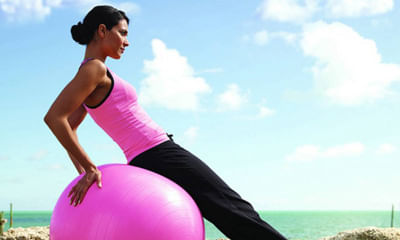Health Benefits Of Ragi
Health benefits of Ragi:
Maintains bone health:
Ragi is the richest source of calcium among plant foods. Calcium along with vitamin d help strengthen bones. It is an excellent source of natural calcium for children and aging people. It helps in the development of bones in growing children and in the maintenance of bone health in adults. Thus, ragi helps keep bone problems at bay and could reduce the risk of fractures as well.
Aids weight loss:
Ragi contains an amino acid, tryptophan which reduces appetite. It has a much higher amount of dietary fiber compared to white rice and other grains. It is also a low-fat cereal and most of the fats are in the unsaturated form. This makes it the best choice in grains for people trying to lose weight. The bulkiness of the fibers and the slower digestion rate makes one feel fuller on fewer calories and therefore helps prevent excess caloric consumption.
Lowers high cholesterol levels:
Ragi contains amino acids lecithin and methionine which help bring down cholesterol levels by eliminating excess fat from the liver. Finger millet also contains the amino acid threonine which hinders fat formation in the liver and helps bring down the cholesterol levels. The high fiber content of ragi also helps manage cholesterol problems.
Help in anemia:
Ragi is an excellent plant source of natural iron. Its consumption helps in anemia. Vitamin c increases iron absorption. Sprouted ragi develops vitamin c in the process of sprouting, therefore, the iron in ragi becomes more bioavailable when consumed as sprouted ragi flour or ragi malt.
Reduces diabetes risk:
Due to the high polyphenol and dietary fiber content in finger millet, regular consumption is known to reduce the risk of diabetes mellitus and gastrointestinal tract disorders. According to a research finger millet based diets help diabetics as they contain higher amounts of fiber over other cereals and millets. Diets based on whole finger millet have a lower glycemic response i. E. Lower ability to increase blood sugar level. This has been attributed to the presence of certain factors in ragi flour which lower digestibility and absorption of starch.
Ragi - best food for diabetic
Helps in relaxation: one amazing benefit of ragi is that it helps in relaxing the body naturally. It is found to be beneficial in conditions of anxiety, depression, migraine and insomnia.
Source of essential amino acids:
Ragi is rich in amino acids vital for the body. Finger millet contains amino acids namely tryptophan, threonine, valine, isoleucine, and methionoine. Isoleucine helps in muscle repair, blood formation, bone formation and improves skin health. Valine is an essential amino acid which facilitates metabolism and repair of body tissues. Another essential amino acid, not found in most cereals, is methionine. It is found in ragi and therefore makes it a complete protein food, unlike other cereals and millets. The amino acid methionine is useful in various body processes, helps in eliminating fat from the body, and is the main provider of sulfur in the body. Sulfur is essential for the production of glutathione which is the body's natural and most important antioxidant.
Ragi food preparations
Finger millet is normally consumed in the form of flour-based foods such as roti (unleavened pancake), mudde (stiff porridge/dumpling) and ambli (thin porridge). Ragi can be used to make porridge, upma, cakes, and biscuits. Ragi flour is used to make various Indian preparations like dosas, idlis, and ladoos.
'puttu' is a traditional breakfast of Kerala, usually made with rice powder together with coconut and steamed in a cylindrical steamer. The same preparation is also made with ragi powder, which makes it more nutritious
Multigrain flour preparation by combining wheat and finger millet in the ratio of 7: 3 (wheat: finger millet) is one of the simplest ways of incorporating ragi in the daily diet as no Indian meal is complete without the Indian style bread or roti. In the proposed blend, though the gluten content is reduced significantly, the making of chapatti is not much affected. However, the color turns a little dark. Fortification of finger millet in chapattis is very helpful in controlling glucose levels in diabetic patients efficiently.
Malted ragi grains are ground and consumed, mixed with milk, boiled water or yogurt. In southern parts of India, it is the recommended food, by doctors, for infants of six months and above because of its high nutritional content. Homemade ragi malt is one of the most popular infant foods till date.
Delicious ragi malt
Malting characteristics of finger millet are superior to other millets. On malting, the vitamin cis elaborated, phosphorus availability is increased, digestion is easier and amino acids are synthesized. In south India, the malted ragi flour is extensively used in the preparation of weaning foods, instant mixes and beverages.



+1.svg)
